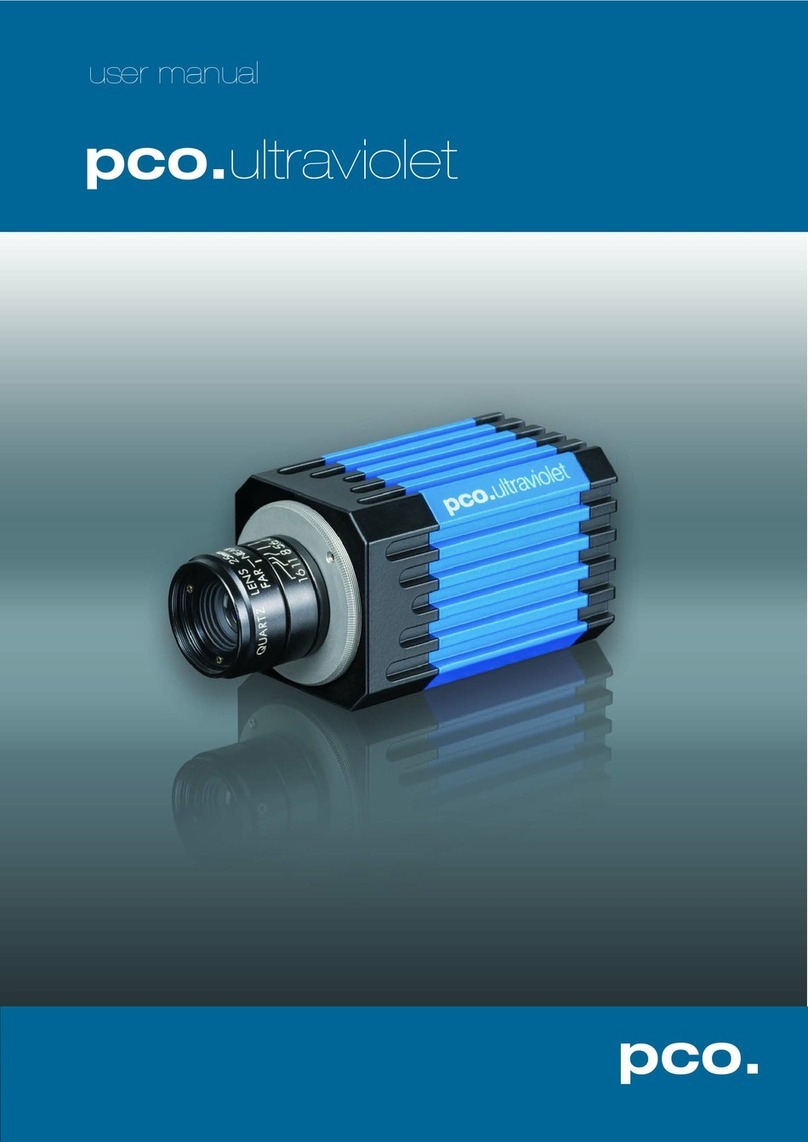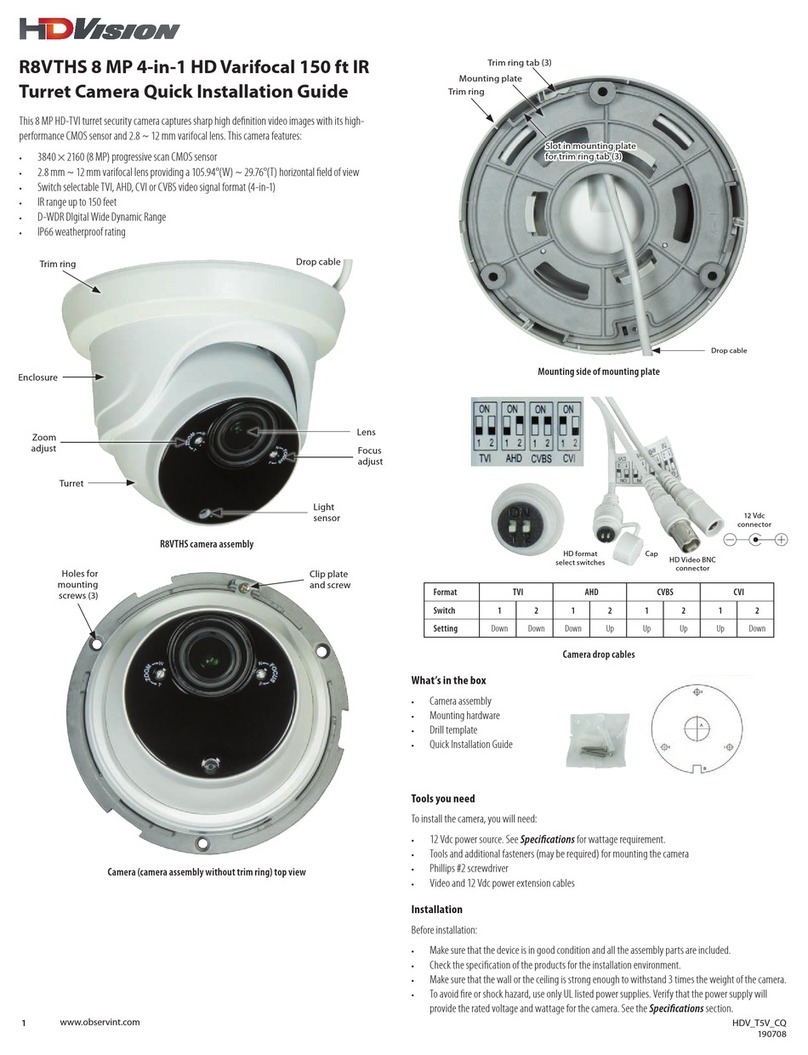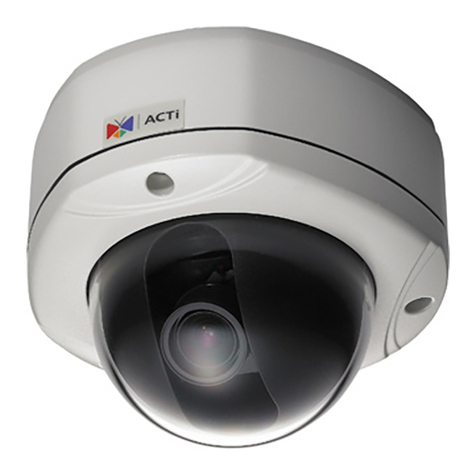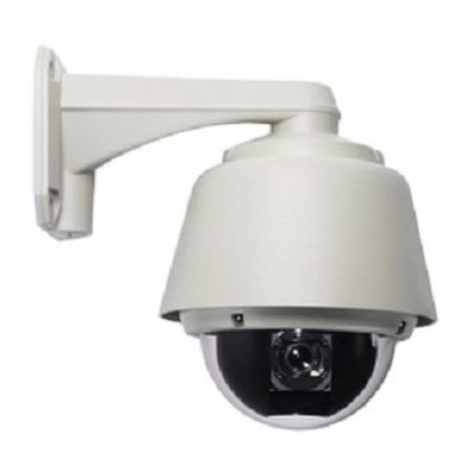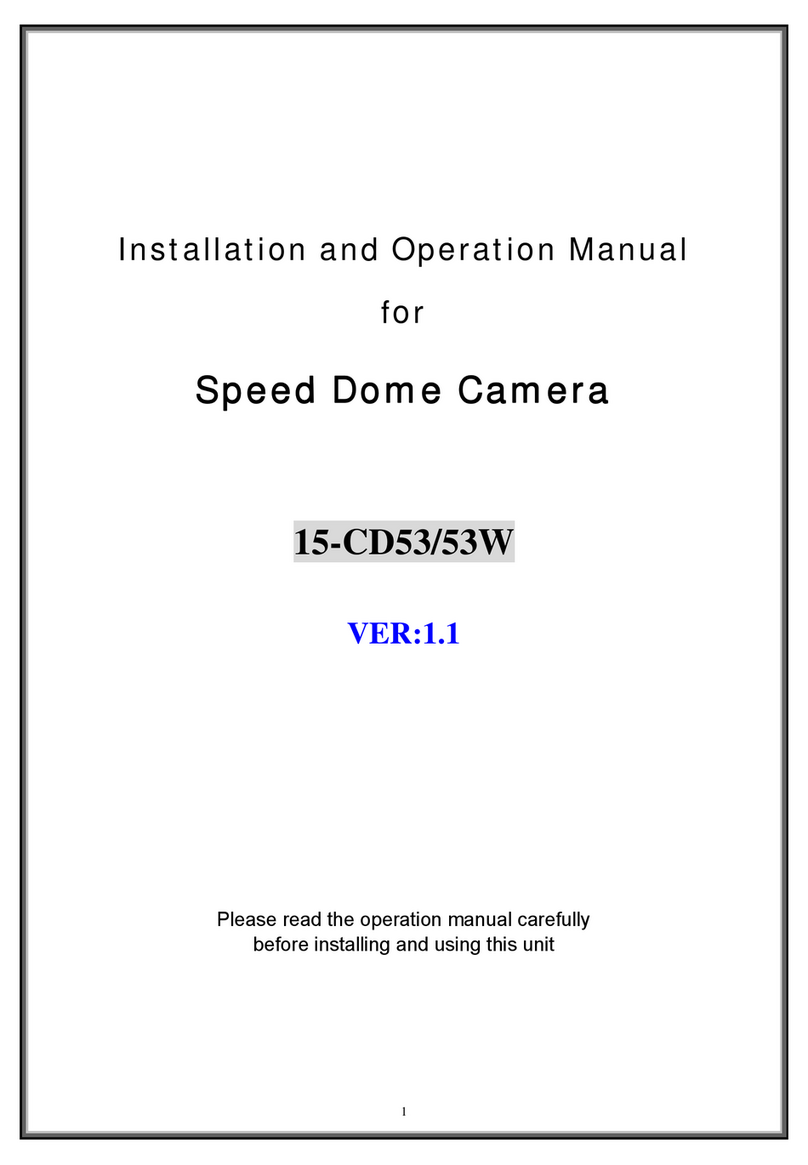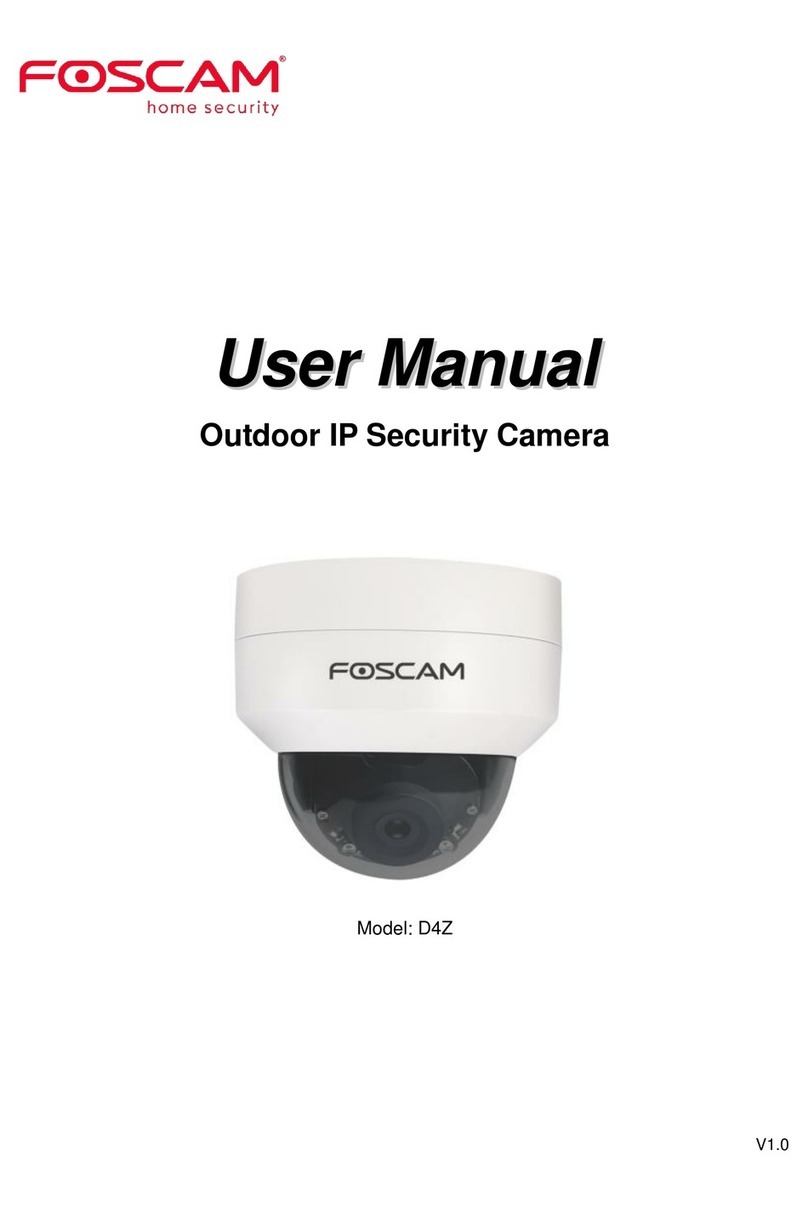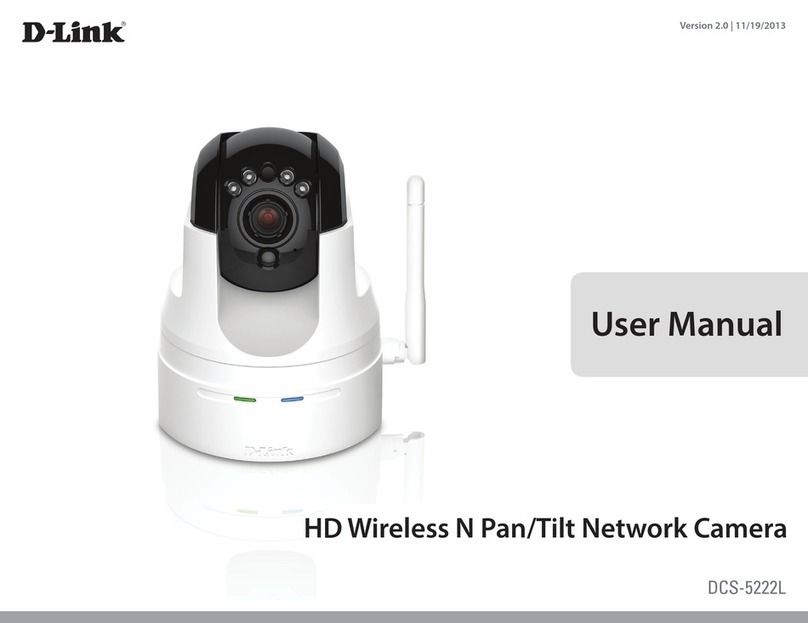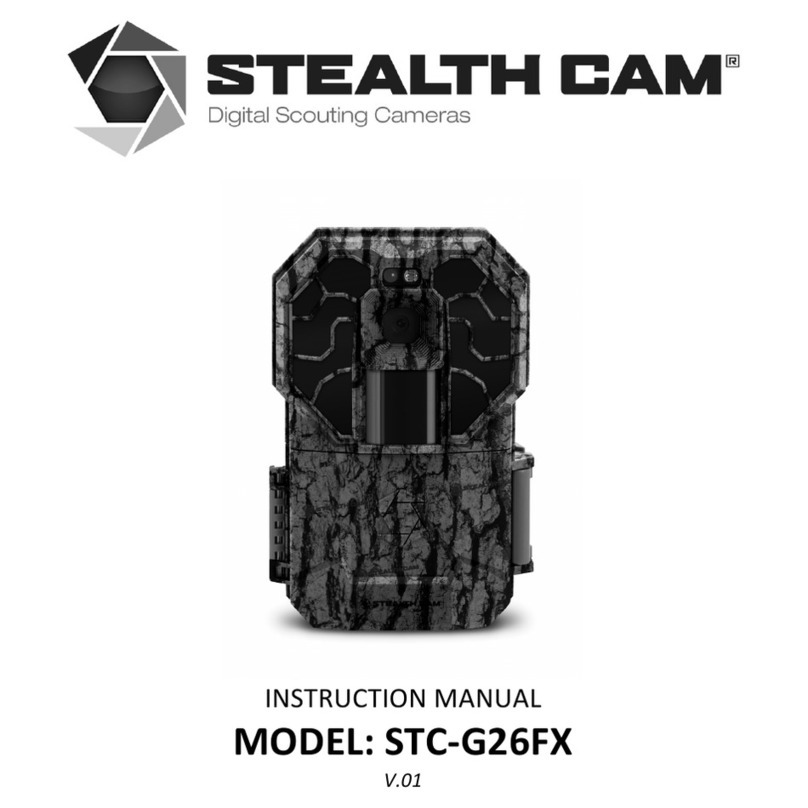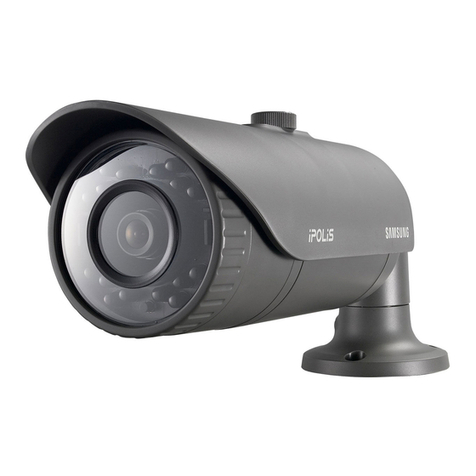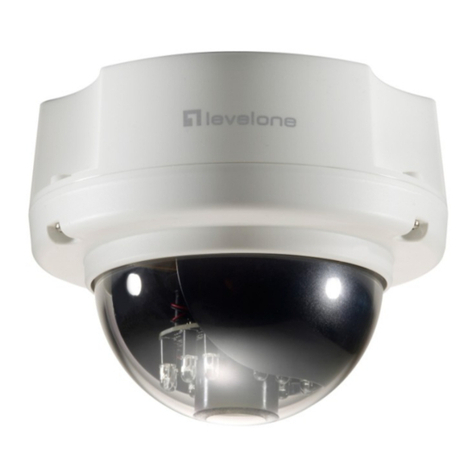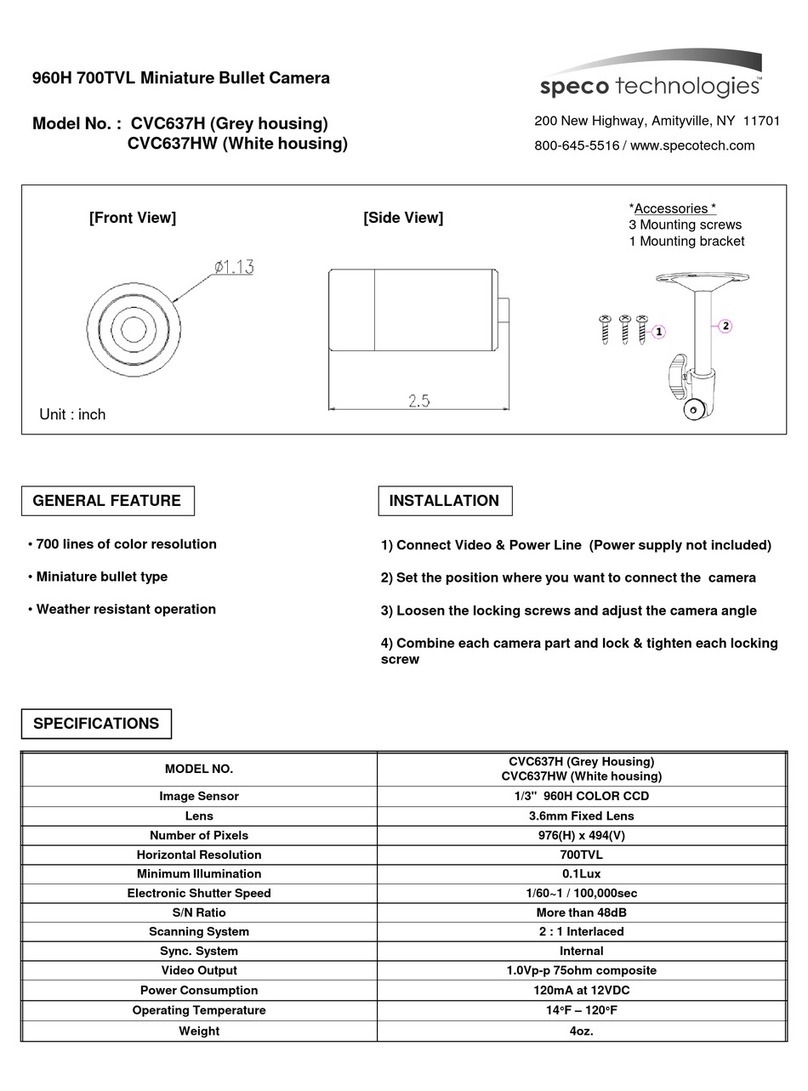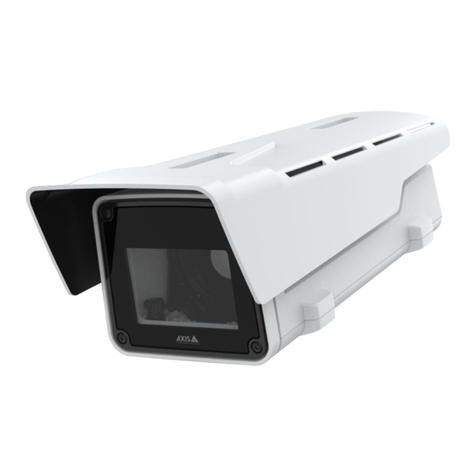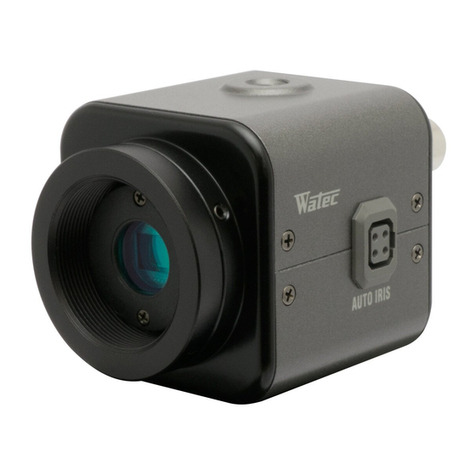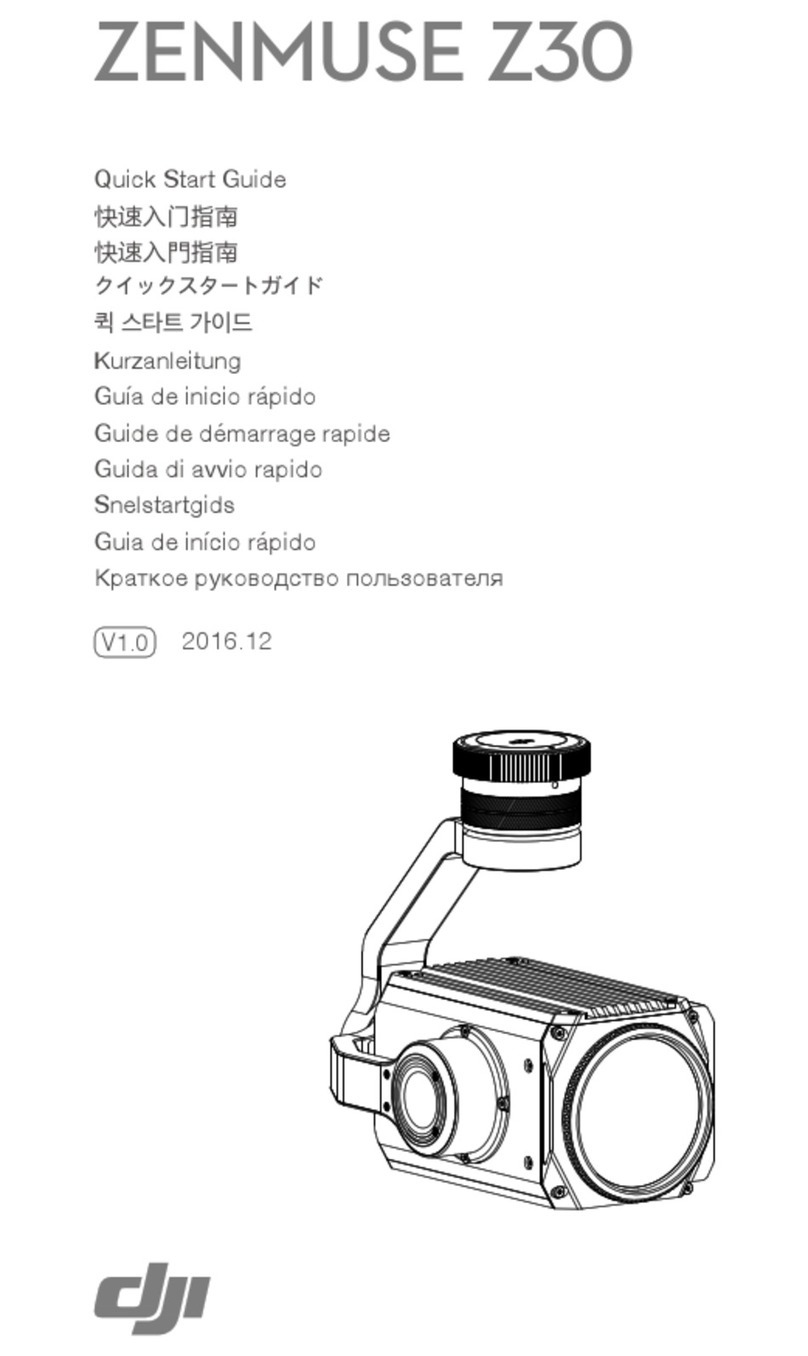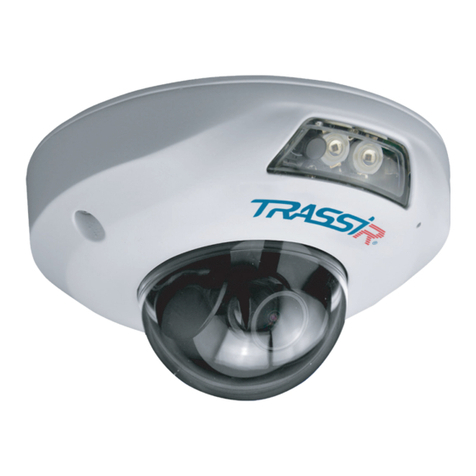Pco VC45 User manual

VC45VC45
VM45VM45
Operating InstructionsOperating Instructions


Safety Instructions 3
PCO 1999
VMC45-03/99
Safety Instructions
For your own safety and in order to guarantee a safe operation
of the camera, please read carefully the following information
prior to using the device.
•Never operate the camera at places where water or dust
might penetrate.
•Place the camera on a sufficiently stable basis.
Shocks like e.g. dropping the camera onto the floor, might
cause serious damage to the device. Therefore exclusively
the tripod attachment at the bottom side should be used for
mounting the camera.
•Always unplug the camera before cleaning it. Do not use
cleaning liquids or sprays. Instead, use a dry, soft duster.
•Make sure that the connecting cable is in good condition and
that the link to the socket does not represent an obstacle.
•Detach the camera and contact the customer service in the
following cases:
−When cable or plug are damaged or worn-out.
−When water or other liquids have soaked into the device.
−When the device is not properly working although you
followed all instructions of the user's manual.
−When the camera fell to the floor or the housing has been
damaged.
−When the device shows apparent deviations of normal
operation.


Contents 5
PCO 1999
VMC45-03/99
Contents
1. Video Camera VC45
1.1 Features of the Camera............................................6
Video Standard ...........................................................................6
Shutter Control............................................................................6
Long Exposure............................................................................6
1.2 CCD Sensor..............................................................7
Overview of the used sensors.....................................................7
Lens-on-chip...............................................................................7
Spectral Response......................................................................8
1.3 Connections..............................................................8
Lens Mount.................................................................................8
Power Supply..............................................................................8
Video Output...............................................................................8
Pin Assignment...........................................................................9
1.4 Mode Settings.........................................................14
Operating Mode ........................................................................14
Long Exposure in Frame Mode .................................................15
Long Exposure in Field Mode....................................................15
Shutter Mode ............................................................................16
Gain Control..............................................................................16
Gamma Setting.........................................................................16
2. Video Module VM45
Pinning of the I/O Connector ST1..............................................17
DIP switches.............................................................................21
CCD select and standard..........................................................22
Gamma Setting.........................................................................23
3. Servicing, Maintenance and Cleaning
Instructions
Servicing, Maintenance and Cleaning Instructions....................24
Cleaning Method for the Optical Part.........................................24
4. Appendix
Customer Service......................................................................25
Warranty...................................................................................25
CE-Certification.........................................................................26
Dimensions and Weight............................................................26
Electrical Schematics of the board VMAIN................................27
System Data .............................................................................28
Operating Instructions VC45/VM45
Version 03/99
Subject to change without prior notice!!
Copyright by PCO, 1999

61. Video Camera VC45
PCO 1999
VMC45-03/99
VC45 VM45VC45 VM45
This manual contains important information and instructions for
the use of the Video Camera VC45 and the Video Module
VM45.
If you work with a Video Camera VC45, you will find all neces-
sary information in Chapter 1.
Chapter 2 includes additional information when working with a
Video Module VM45 (= VC45 without housing).
1. Video Camera VC45
1.1 Features of the Camera
The video camera VC45 is a high performance monochrome
camera, based on a solid state image sensor. The high quality
"lens-on-chip" CCD, combined with an advanced electronics, in-
creases sensitivity of the VC45 substantially, compared with
high standard video cameras. An absolute black level is
achieved via special darkened reference pixels, yielding a per-
fect linear relation between light input and output signal. A great
number of additional features makes the VC45 suitable for
nearly every application.
Video Standard The VC45 is easy to use. The analog video signal is a CCIR,
respect. a RS170 standard signal and compatible to the whole
video equipment on the market.
With a potentiometer at the rear panel of the camera the gain
can be set externally.
Shutter Control An integrated shutter control allows exposure times from 100µs
to 20ms (CCIR) respect. 16.7ms (RS170). It can be set by DIP
switches, parallel or serial input.
Long Exposure A long exposure time can be generated up to 20s by an external
or serial input. When using the external input a special power
down mode prevents the CCD from additional dark current.
There are two integration modes possible: FRAME interlaced
and FIELD interlaced.
The sensor of the VC45 is absolutely insensitive against over-
exposure, i. e. too much light cannot damage the CCD sensor.

1. Video Camera VC45 7
PCO 1999
VMC45-03/99
1.2 CCD Sensor
Overview The following CCD sensors can be used in the camera:
CCIR
format resolution pixel size active sensor
1/2“ 741 x 576 pixel 8.6 x 8.3 µm 6.4 x 4.8 mm
2/3“ 741 x 576 pixel 11.6 x 11.2 µm 8.6 x 6.5 mm
RS170
format resolution pixel size active sensor
1/2“ 756 x 486 pixel 8.4 x 9.8 µm 6.4 x 4.8 mm
2/3“ 756 x 486 pixel 11.6 x 13.5 µm 8.8 x 6.6 mm
Lens-on-chip Each of the used CCD sensors have the “lens-on-chip“ inte-
grated which increases the sensitivity of about factor 2.
The following drawings show the principle function of the lens-
on-chip technical.

81. Video Camera VC45
PCO 1999
VMC45-03/99
Spectral Response The following drawing shows the spectral response of the used
sensors. Optional the VC45 is available with an infrared cutting
filter. All wavelength higher than about 680nm will be cut off.
= without filter
= with infrared cutting filter
1.3 Connections
Lens Mount The VC45 uses a C-Mount with a standard back focal length of
17.52mm (distance between the front edge of the C-Mount in-
sert and the focal plane of the CCD sensor). The C-Mount has a
fine adjustment to allow for small variations in the focal length of
instruments.
To adjust to a different back focal length, just loosen the set
screw at the bottom of C-Mount front plate. Rotate the C-Mount
insert to the desired position. (The C-Mount insert has a 0.5
thread suitable for fine adjustment.) Then secure the insert
again by tightening the set screw.
Power Supply The power supply (230V), delivered with the VC44, provides
12V (-5%, +10%). At 12V the power consumption is about
300mA. On the power supply a 12-pin special connector is
mounted.
Video Output The analog video output (BNC socket) supplies a standard
video signal (1Vpp, 0.3V Sync-Level on 75Ω) according to CCIR
or RS170 standard.
The video signal is compatible to all video equipment like re-
corder, printer, monitors, ...
Please use only 75Ωcables (e.g. RG59)!
Some monitors need an external Sync-signal. In this case you
need a connection between VIDEO OUT of the monitor and
SYNC IN of the monitor.

1. Video Camera VC45 9
PCO 1999
VMC45-03/99
Pin Assignment The 12 pin socket at the camera rear panel has a standard pin
assignment as follows.
Please note that there are also special pin assignments possi-
ble. In this case a separate pin assignment is enclosed.
pin signal name level function input / output
1POWER GND ground input
2POWER +12V +12V DC input power input
3EXP TTL exposure input
4EXPD TTL exposure power down input
5ENB TTL enable shutter input
6ED0 TTL shutter control input
7ED1 TTL shutter control input
8ED2 TTL shutter control input
9CSYNC TTL composite sync output
10 VSYNC TTL vertical sync output
11 MODE TTL frame / field integration input
12 GENLOCK Video, TTL* genlock input
* signal level from 1 ... 5V is accepted
POWER GND Ground
POWER +12V Input voltage 12V (+10% / -2%)
EXP Long Exposure Control input
TTL level
The exposure time can be prolonged by a low signal.
Typical time range between 40ms ... 10s.
This input is checked at any rising edge of the VSYNC signal (=
end of the VSYNC). When the input is low, the integration time
will be prolonged for the next field/frame.
In the field integration mode multiple of 20ms will be exposed, in
the frame integration mode multiple of 40ms will be exposed.
The input is connected to a pull-up resistance.
12 pin socket of the
camera rear panel

10 1. Video Camera VC45
PCO 1999
VMC45-03/99
Remark The Long Exposure Control can only be active when the module
is in the parallel mode and the shutter is off!
DIP switch S1/pin 7 = open
DIP switch S1/pin2 = closed; ENB don’t care
or
DIP switch S1/pin2 = open; ENB = low
EXPD Long Exposure Power Down input
TTL level
For long integration times, the sensor can be set in a power-
down mode. This mode avoids the generating of an additional
dark current.
This input can be set parallel with the EXP input but must be re-
set at least 200ms before the EXP is reset.
The input is connected to a pull-up resistance.
Remark The Long Exposure Power Down can only be active when the
module is in the parallel mode and the shutter is off!
DIP switch S1/pin 7 = open
DIP switch S1/pin2 = closed; ENB don’t care
or
DIP switch S1/pin2 = open; ENB = low

1. Video Camera VC45 11
PCO 1999
VMC45-03/99
ENB Shutter speed setting, parallel or serial input.
ED0
ED1
ED2 Parallel Input Only the high-speed shutter is used when using parallel input.
(During frame accumulation, low-speed shutter does not oper-
ate normally).
Shutter speed table
JP1 ENB ED0 ED1 ED2 shutter speed
XLX X X shutter off
LH H H H 1/601)
H H H H H 1/501)
LHLH H 1/100
H H LH H 1/120
XH H LH1/250
XHL L H1/500
XHHHL1/1000
XHLHL1/2000
XH H L L 1/4000
XHL L L 1/10000
1) Accumulation time is as follows regardless of field accumulation / frame
accumulation: JP1 = low (EIA RS170), 1/60s
JP2= high (CCIR), 1/50s
(Pseudo field readout during frame accumulation)
Serial Input The following four modes can be selected according to the
combination of serial data SMD1 and SMD2.
(During frame accumulation, low-speed shutter does not oper-
ate normally).
Shutter Mode
mode flickerless high-speed
shutter low-speed
shutter no shutter
SMD1 L L H H
SMD2 LHLH
flickerless: eliminates flicker resulting from the frequency of fluorescent light
high-speed shutter: shutter speed higher than 1/50 (CCIR)
shutter speed higher than 1/60 (RS170)
low-speed shutter: shutter speed lower than 1/50 (CCIR)
shutter speed lower than 1/60 (RS170)
(does not operate normally during frame accumulation
no shutter no shutter operation
Input timing when using serial input
The data on ED2 is latched in the register at the rising edge of
ED1 and is then taken in internally while ED0 is low.

12 1. Video Camera VC45
PCO 1999
VMC45-03/99
symbol min: max:
ts2 ED2 setup time against the rising edge of ED1 20ns
th2 ED2 hold time against the rising edge of ED1 20ns
ts1 ED1 rising setup time against the rising edge of ED0 20ns
tw0 ED0 pulse width 20ns 50µs
ts0 ED0 rising setup time against the rising edge of ED1 20ns
Shutter speed calculation
(During frame accumulation, low-speed shutter does not oper-
ate normally).
High-speed shutter
... for CCIR: T=[31210-(1FF16-L16)] x 63.56 + 34.78µs
... for RS170: T=[26210-(1FF16-L16)] x 64 + 35.6µs
(L16 = load value)
CCIR RS170
load value shutter
speed calculated
value load value shutter
speed calculated
value
0C816 1/10000 1/10040 0FA16 1/10000 1/10169
0CA16 1/4000 1/4394 0FC16 1/4000 1/4435
0CE16 1/2000 1/2068 10016 1/2000 1/2085
0D616 1/1000 1/1004 10816 1/1000 1/1012
0E616 1/500 1/495 11816 1/500 1/499
1o516 1/250 1/250 13716 1/250 1/252
14316 1/125 1/125 17616 1/125 1/125
14916 1/100 1/120 19616 1/100 1/100
Low-speed shutter
N = 2 x (1FF16-L16)FLD
However, 1FF cannot be used as the load value.
Maximum 1023 fields à 20ms (= 20 seconds).
load value shutter speed (FLD)
1FE16 2
1FD16 4
... ...
10116 508
10016 510

1. Video Camera VC45 13
PCO 1999
VMC45-03/99
CSYNC Composite synchronisation output
TTL level
VSYNC Vertical synchronisation output
TTL level
MODE Switch between field-frame readout and integration
TTL level
mode readout
low field
high frame
GENLOCK External synchronisation
Input to synchronise the camera to an external video device.
A video signal (75Ω) or a TTL signal, consisting of horizontal
and vertical synchronize pulses (composite sync, CSYNC) is
needed. (Internally there is no 75Ωtermination.)
The synchronisation is achieved by an internal PLL.
The synchronisation with Genlock can be enabled/disabled by
controlling LSW. This can be done with DIP switch S1:
DIP switch S1/pin 8 = open Genlock disabled
DIP switch S1/pin 8 = closed Genlock enabled

14 1. Video Camera VC45
PCO 1999
VMC45-03/99
1.4 Mode Settings
Operating Mode The camera runs in two different operating modes:
•FRAME interlaced
•FIELD interlaced
Hint At continuous illumination the brightness of the image is the
same in FIELD or FRAME mode:
CCIR: 40ms with 1 pixel or 20ms with 2 pixels
RS170: 33ms with 1 pixel or 16.5ms with 2 pixels
However, with externally applied shuttering (e.g. flashlight or la-
ser pulse), the FIELD mode generated image has double the
brightness of a FRAME mode generated image.
In the FRAME interlace mode the camera produces two fields
generated with a time shift FIELD 1 and FIELD 2 (odd respect.
even lines). These fields are each integrated for 40ms.
The FIELD interlace mode combines 2 lines (1+2, 3+4, ... in
FIELD 1 and 2+3, 4+5, ... in FIELD 2). FIELD 2 is shifted by one
line in respect to FIELD 1 (line shifting).
FIELD 1
1
3
5
FIELD 2
2
4
6
FRAME
INTERLA-
Integration Time: 2 x 40ms (CCIR)
2 x 33.4ms
Image 1Image 2
1
2
Video Out
FIELD 1
1
2
3
4
5
6
FIELD 2
1
2
3
4
5
6
INTERLA-
FIELD
Integration Time: 2 x 20ms (CCIR)
2 x 16.7ms
Image 1Image 2
1
2
Video Out

1. Video Camera VC45 15
PCO 1999
VMC45-03/99
Long Exposure in Frame Mode
By using the EXP (= exposure) input (pin 3 of the 12-pin socket)
the integration time can be controlled.
In line 10 of the video signal a marker pulse is allocated. If in
this moment the EXP signal is "high", the marker pulse is sup-
pressed, the image is not shifted into the shift-register and the
integration time is prolonged.
When operating in the FRAME mode, always 2 x n marker
pulses are suppressed, to achieve two evenly illuminated fields
(40ms). During the integration, black pictures are released from
the camera.
odd even odd even odd 1 even 1 odd 2 even 2even
VSYNC
Integr. ODD
Integr. EVEN
EXP
VIDEO OUT
20ms
black image
odd 1
even 1
odd 2 odd 3
even 2 even 3
*) *)
*) Marker pulse (in video line 10) is suppressed, thus yielding longer integration time.
Long Exposure in Field Mode Via the EXP signal the integration time can be controlled. In line
10 of the video signal a marker pulse is allocated. If in this mo-
ment the EXP signal is "high", the marker pulse is suppressed,
the picture not shifted in the shift register and integration time
prolonged.
The FIELD mode allows integration time prolongation in steps of
20ms. During the integration, black pictures are released from
the camera.
VSYNC
Integration
EXP
VIDEO OUT
20ms
black image
field x field x+1 field x+2
field x field x+1 field x+2
*) *)
*) Marker pulse (in video line 10) is suppressed, thus yielding longer integration time.

16 1. Video Camera VC45
PCO 1999
VMC45-03/99
Shutter Mode In the shutter mode, exposure times between 1/50 ... 1/10000 s
can be realized. These shutter times can be achieved by a par-
allel and serial programming via external signals (ENB, ED0,
ED1, ED2) or by a parallel setting via internal DIP switches.
Gain Control The gain is externally adjustable with the potentiometer at the
back panel of the camera. It can be selected in the range of ±
12dB.
Gamma Setting The gamma correction is preset by factory to "linear".
If you want to change it, internal changes are necessary (see
Chapter 2).
3
1
2
112-pin Socket
2Gain Potentiometer
3Analog Video Output

2. Video Module VM45 17
PCO 1999
VMC45-03/99
2. Video Module VM45
The main features of the Video Module VM45 are identical to
these of the Video Camera VC45.
In this Chapter you will find some additional information to the
Video Module VM45.
Please note that there are parallels between the 12-pin socket
at the camera rear panel and the internal connector ST1.
Pinning of the I/O Connector ST1
The connector ST1 is placed on the lower (larger) board. Some
signals has parallel wires to the I/O connector ST1 and to the
DIP switch S1.
When using the external interface (I/O connector ST1) all
DIP switches must be set to off!
pin at internal
connector ST1 signal
name pin at 12-pin
connector function
1GND X1ground
2+12V X2input power
3GND X1ground
4+5Vout -- input or output power
5GND X1ground
6VIDEO -- video out
7TRIG -- trigger input
8GAIN ext -- external gain
9ENB X5enable shutter
10 ED0 X6shutter control
11 ED1 X7shutter control
12 ED2 X8shutter control
13 EXPD X4exposure power down
14 EXP X3exposure
15 CSYNC X9composite sync
16 MODE X11 frame / field integration
17 VSYNC X10 vertical sync
18 HSYNC -- horizontal sync
19 VR -- vertical reset
20 GENLOCK X12 genlock
The ‘X’ marked signals are already described in Chapter 1 (see page 9).
ST1
DIP switch S1
lower board VMAIN

18 2. Video Module VM45
PCO 1999
VMC45-03/99
GND Ground
+12V see Chapter 1, page 9
+5Vout Output of a +5V
Regulated by an internal voltage regulator (7805). When the
voltage regulator is not needed you can also use an external 5V
power supply. In this case the regulator has to be bridged.
VIDEO Video output signal, CCIR or EIA RS170
1Vpp, 0.3V Sync-Level on 75Ω
TRIG Trigger mode
Continuously variable shutter
When using the normal shutter, either leave the TRIG pin open
or connect it to the power supply.
When using the continuous variable shutter, input the clock
pulse to the TRIG pin
When using the TRIG pin to control the exposure time, in order
to broaden the control range it is necessary to use the ED=,
ED1, and ED2 pins to set the shutter speed to 1/10000.
exposure time
VSYNC
HSYNC
TRIG
XSG
From the start of the TRIG input (falling edge) to the XSG pulse
there is a variable exposure time.
The XSG pulse is done in the following lines after the vertical
sync has ended:
CCIR 8 lines odd field
8.5 lines even field
EIA RS170 1.5 lines odd field
1 line even field

2. Video Module VM45 19
PCO 1999
VMC45-03/99
GAIN ext External gain setting
There are three possibilities to control the gain:
•Internally by the potentiometer P2
•Externally with a voltage range of 0 ... 5V
The gain range is between 5 ... 32 dB.
•Externally with a potentiometer:
upper board
VIDEO SPC
GND
+5 V
to GAINext
10kΩ
P2

20 2. Video Module VM45
PCO 1999
VMC45-03/99
ENB see Chapter 1, page 11
ED0 see Chapter 1, page 11
ED1 see Chapter 1, page 11
ED2 see Chapter 1, page 11
EXPD see Chapter 1, page 10
EXP see Chapter 1, page 9
CSYNC Composite synchronisation output (CSYNC)
TTL level
MODE see Chapter 1, page 13
VSYNC see Chapter 1, page 13
HSYNC Horizontal synchronisation output (HSYNC)
TTL level
VR Vertical reset input (TTL level)
A vertical image synchronisation can be made with a vertical
sync signal
GENLOCK External synchronisation
Input to synchronise the camera to an external video device.
A video signal (75Ω) or a TTL signal, consisting of horizontal
and vertical synchronize pulses (composite sync, CSYNC) is
needed.
The synchronisation is achieved by an internal PPL.
A second possibility is to input separately the horizontal sync
and the vertical sync. In this case the horizontal sync must be
connected to the GENLOCK and the vertical sync must be con-
nected to the vertical reset (VR).
The synchronisation with Genlock can be enabled/disabled by
controlling LSW. This can be done with DIP switch S1:
DIP switch S1/pin 8 = open Genlock disabled
DIP switch S1/pin 8 = closed Genlock enabled
This manual suits for next models
1
Table of contents
Other Pco Security Camera manuals
